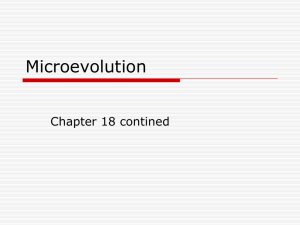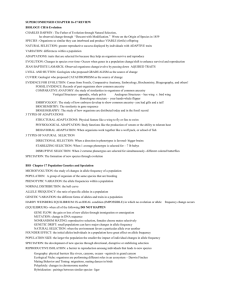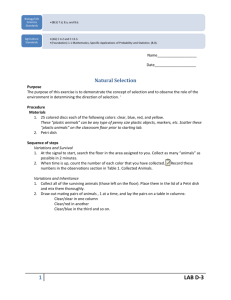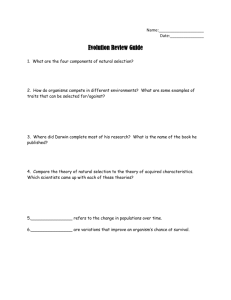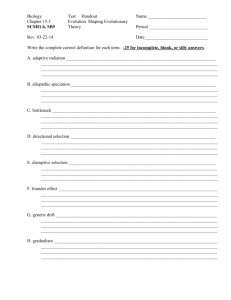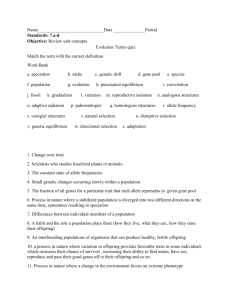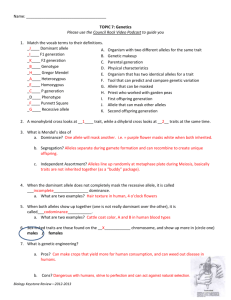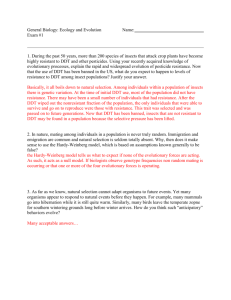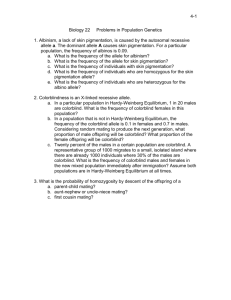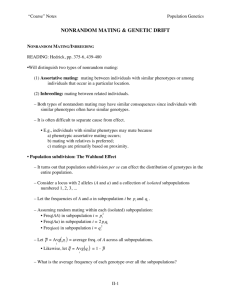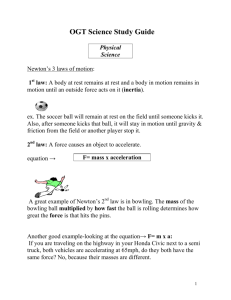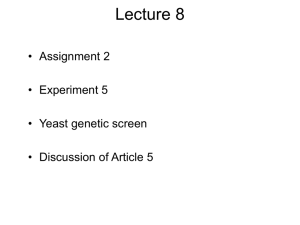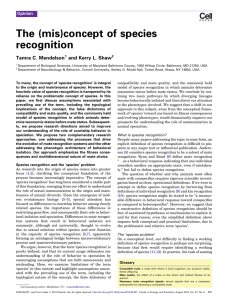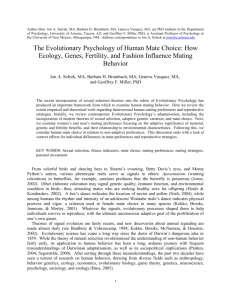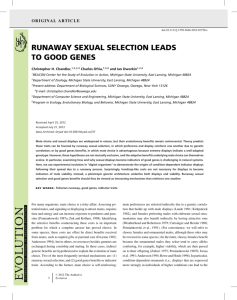Chapter 16 The Evolution of Populations and Speciation
advertisement
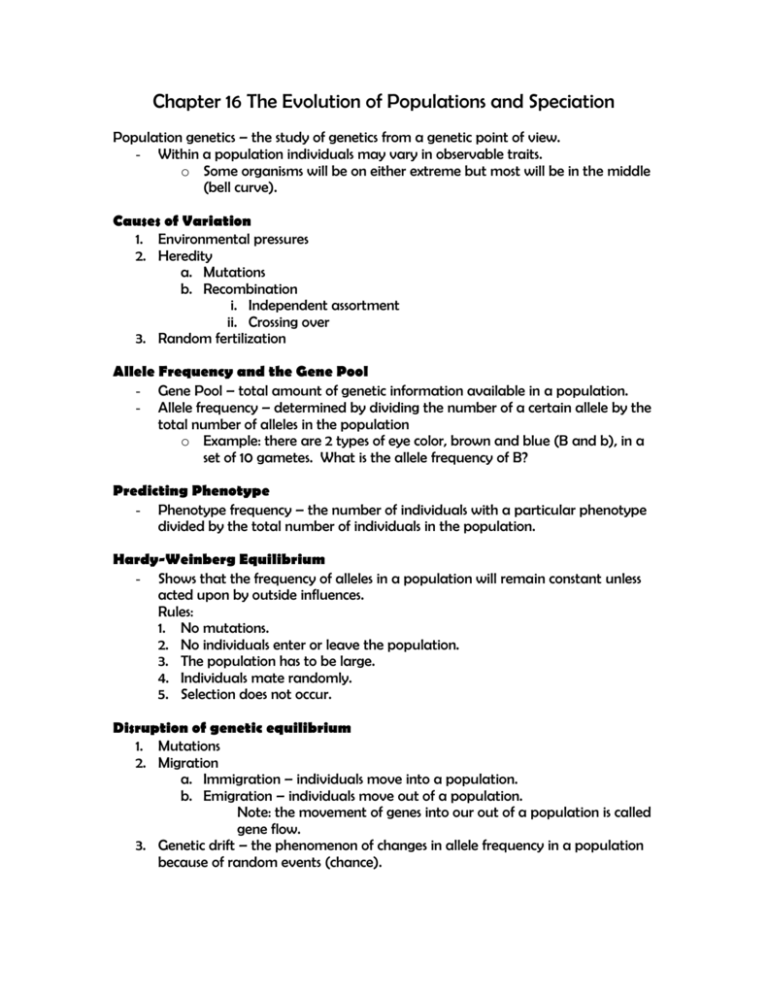
Chapter 16 The Evolution of Populations and Speciation Population genetics – the study of genetics from a genetic point of view. - Within a population individuals may vary in observable traits. o Some organisms will be on either extreme but most will be in the middle (bell curve). Causes of Variation 1. Environmental pressures 2. Heredity a. Mutations b. Recombination i. Independent assortment ii. Crossing over 3. Random fertilization Allele Frequency and the Gene Pool - Gene Pool – total amount of genetic information available in a population. - Allele frequency – determined by dividing the number of a certain allele by the total number of alleles in the population o Example: there are 2 types of eye color, brown and blue (B and b), in a set of 10 gametes. What is the allele frequency of B? Predicting Phenotype - Phenotype frequency – the number of individuals with a particular phenotype divided by the total number of individuals in the population. Hardy-Weinberg Equilibrium - Shows that the frequency of alleles in a population will remain constant unless acted upon by outside influences. Rules: 1. No mutations. 2. No individuals enter or leave the population. 3. The population has to be large. 4. Individuals mate randomly. 5. Selection does not occur. Disruption of genetic equilibrium 1. Mutations 2. Migration a. Immigration – individuals move into a population. b. Emigration – individuals move out of a population. Note: the movement of genes into our out of a population is called gene flow. 3. Genetic drift – the phenomenon of changes in allele frequency in a population because of random events (chance). a. Example: in a small population, if 1 individual doesn’t mate, it disrupts the allele frequency. 4. Nonrandom mating a. Mate selection is due to geographic proximity. i. Think of interbreeding and the likelihood of mutations. b. Assortive mating: choosing a mate with similar characteristics, thus, similar genes. 5. Natural Selection a. Stabilizing selection – individuals with the average form of the trait are better off. b. Directional selection – individuals with one extreme of the trait are better off. c. Disruptive selection – individuals with either extreme of the trait are better off. d. Sexual selection – choosing a mate based on certain traits. Formation of Species - Speciation – the formation of species. Species – a single type of organism who are morphologically similar and can interbreed to produce fertile offspring. Morphological Concept of Species - Morphology – internal and external structure and appearance of an organism. o Means a species is defined by its characteristics. Problems 1. There are little differences among individuals in a population. 2. Some organisms that seem dissimilar can breed and produce offspring in the wild. Biological species concept - A species is a population of organisms that can successfully interbreed but cannot breed with other groups. Problems: 1. Some organisms that seem dissimilar can breed and produce offspring in the wild. Q: How do we get new species? A: It begins with isolation 1. Geographic Isolation a. The physical separation of members of a population 2. Reproductive Isolation a. Barriers prevent successful breeding between populations in the same area. i. Prezygotic – occurs before fertilization. 1. Example: Different mating seasons or mating calls. ii. Postzygotic – happens after fertilization. 1. Examples: The new offspring is sterile or it dies before it can reproduce.

